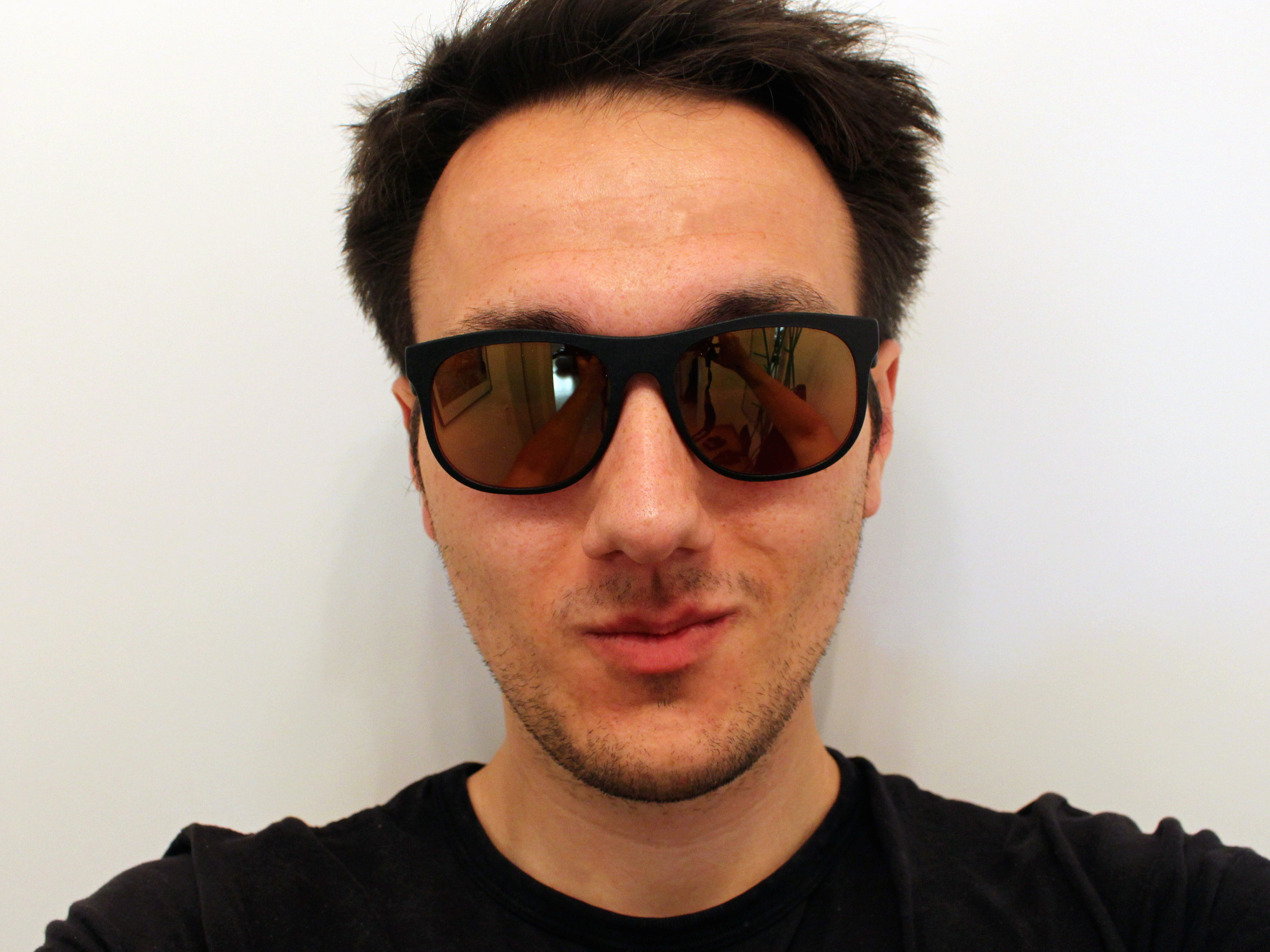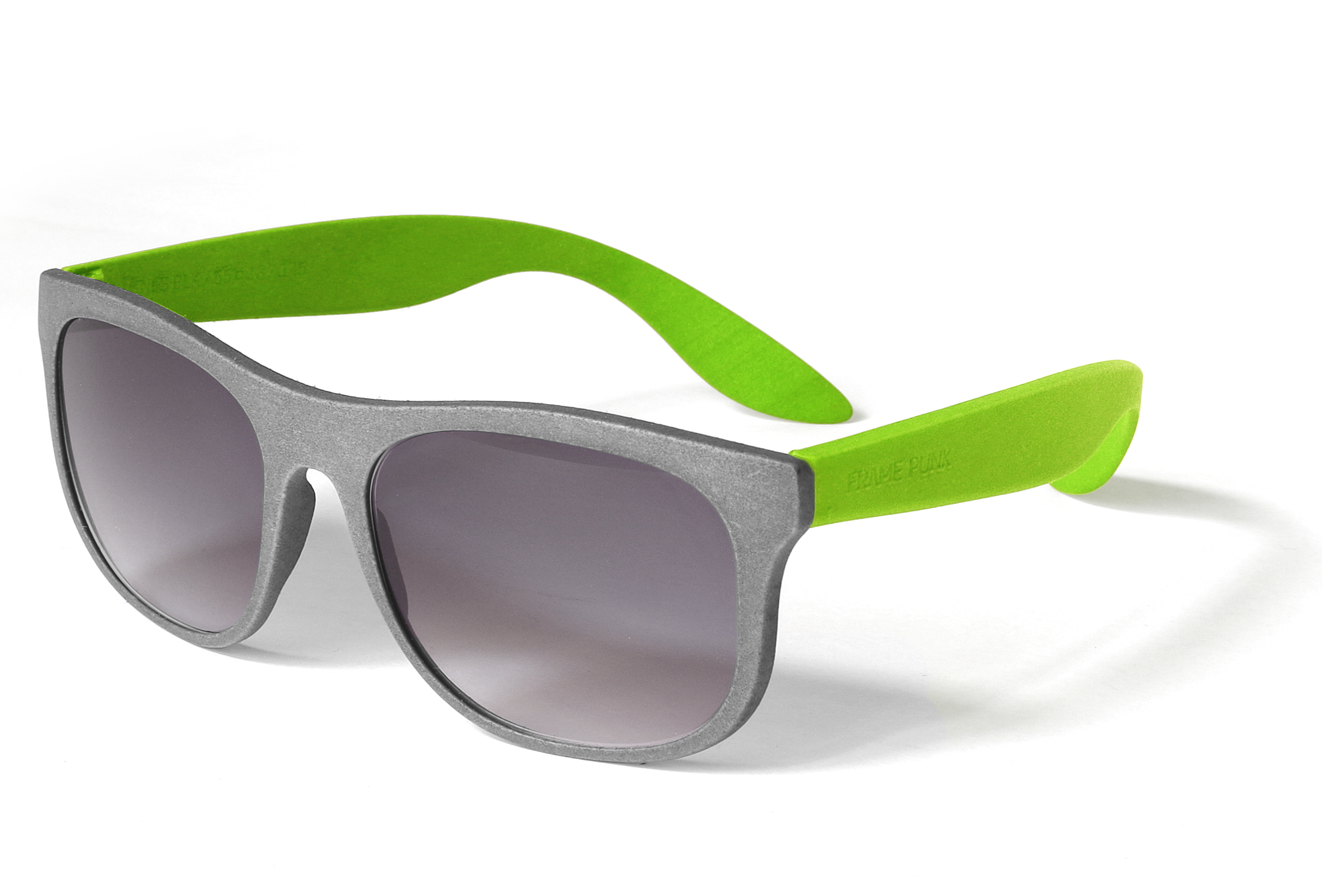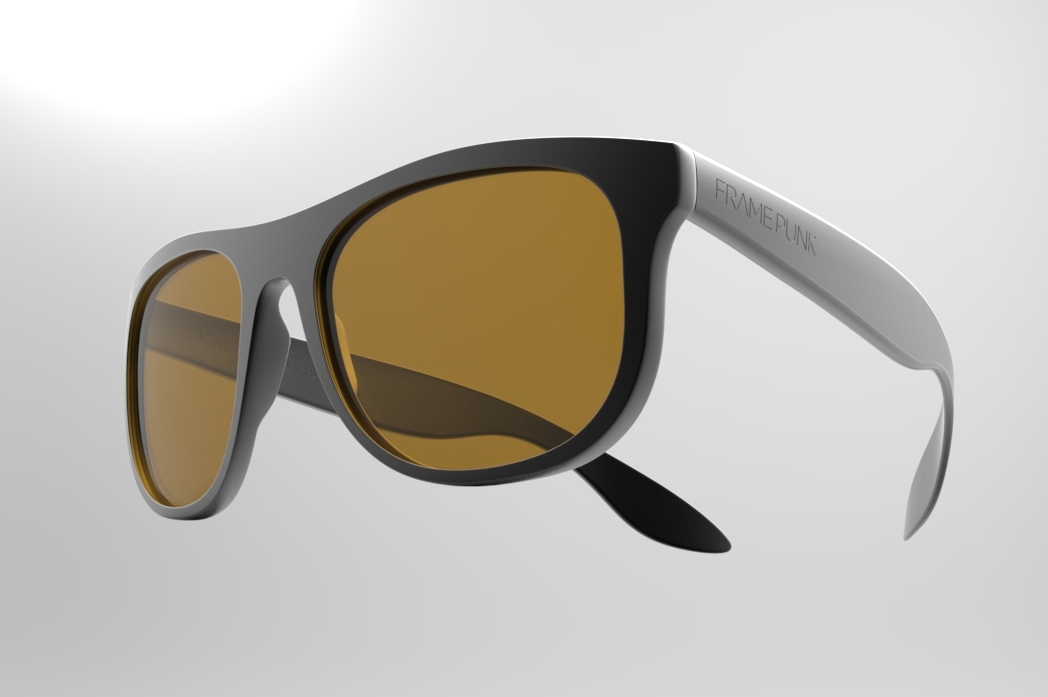
We spoke with Nicolas Farnir, Co-founder of Frame Punk to find out more about how they use 3D printing to produce custom sunglasses.
The Berlin-based company has developed a method of reliably sizing eyeglasses through a web interface, enabling the ability to 3D print custom frames on demand.
Fabbaloo: What 3D printing process are you using to produce the frames?
Nicolas Farnir: We use the SLS printing process, which means selective laser sintering. This technique allows us to create any form we want. Our frames are all made from a specific type of polyamide plastics which has a flour-like appearance in a raw state. Layer by layer the designed object gets shaped by a thin laser.
Fabbaloo: Are they made in house, or is a 3D printing service used?
Nicolas Farnir: We only have a company owned 3D printer in order to produce our prototypes. When we design new frame styles, we first print them out on our 3D printer. Still, we wouldn’t sell the glasses printed on our own 3D printer as the quality is not good enough. There, the glasses we sell are produced by a 3D printing service company based in Munich. This company has high-end 3D printers and we can print glasses in perfect quality.

Fabbaloo: Can you explain how the sizing process works?
Nicolas Farnir: We offer frames in 5 different sizes, from S to XXL. In order to determine the right size for his glasses, a customer has to print out our frame templates. He can then cut them out and try the different frame sizes on.
We know that this solution is not the best, but for now it is the only viable solution we found. Still, we considered more complex sizing processes which would make it easier for the customer to find the perfect frame size and we already met the representatives of a company which could develop such software.
Fabbaloo: We’re beginning to see several 3D printed eyeglass producers appear recently. What is Frame Punk’s strategy to differentiate?
Nicolas Farnir: In fact, we know some competitors like Protos Eyewear, Mykita and others, which all have 3D printed eyewear. Still, customers don’t have the opportunity to adapt the glasses to their needs. Frame Punk’s strategy is to give the customer the opportunity to choose between different frame frame styles (sunglasses, prescription glasses, sports glasses), different colors, sizes and so on.
For example, Mykita Mylon is an eyewear collection especially designed for sports. Also, Protos Eyewear has a lot of designs, but all of their glasses are black.
So, we’d like to offer different types of frames, as well as frame colors, sizes, lens colors and so on. We want to create unique eyewear adapted to the needs of our customers.

Fabbaloo: How will you attract designers to your brand? Is this a challenging issue?
Nicolas Farnir: Luckily, we are based in Berlin, which is quite a nice city for meeting a lot of designers. Right now we are working with two of them in order to create the next designs. We started with our first design of sunglasses, called “Optimist”, and now we focus on prescription glasses (Winter is coming, it’s not that easy to sell sunglasses anymore). We hope to have some designs finished in the next few weeks in order to offer them to our customers.
It is not too difficult to find designers in Berlin, as there are a lot of them here. Still, it is a bit more difficult to find some with some knowledge about 3D printing. For now, we managed to find 2 designers and it’s enough to create the first 10 designs.
Fabbaloo: What’s next for Frame Punk?
Nicolas Farnir: We really need to have a shop on our website.
For now, we sell our glasses to friends and family (as well as colleagues of our friends), but don’t have any shop working right now. We are developing the shop but we have really clear ideas of how the shop has to look like. We would like to implement a lot of designs and options for our customers, so it will take about 2 months to have a shop we would be really proud of. As I said before, we want to offer a lot of possibilities to our customers (choice of different frames, colors, lenses and so on), so we need some time to implement everything. Also, we need some brand awareness and we are trying to contact blogs, magazines, newspapers and more in order to present our company.
We’re happy to see another useful application of 3D printing tech to a common problem. The fitting of eyeglasses is, by definition, a very personal matter requiring custom 3D printing. What other personalized 3D print-powered businesses will emerge

